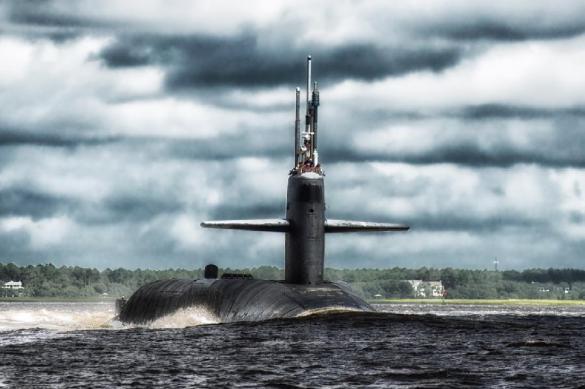Norway troubles K-278 Komsomolets nuclear reactor in the depths of the sea
The radioactive pollution from the K-278 Komsomolets submarine, which sank 30 years ago, exceeds that of the Fukushima nuclear power plant 100 times. The Soviet submarine rests on the bottom of the Norwegian Sea at a depth of more than 1,500 meters.

During the recent mission, a Norwegian deepwater submersible explored the Soviet nuclear-powered submarine. It was the first deepwater mission to the Komsomolets since 2007, when Russian researchers explored the sub and registered an increased level of radiation in the water. Most recently, Norwegian experts from the Institute of Marine Research conducted another research, which showed alarming results.
"We took three samples of water. Two of them did not contain radiation, but in the third sample we found radioactive contamination of 100 becquerels per liter. This is about 100,000 times higher than one can usually find in sea water. The results are preliminary. We will examine the samples more thoroughly when we get home," Hilde Elise Heldal of the Institute of Marine Research said.
The tragedy on board the Komsomolets submarine occurred on April 7, 1989, when the submarine was returning home after about 45 days of service. A fire broke out on board the Komsomolets for reasons that still remain unknown. The submarine resurfaced, but soon started losing buoyancy due to the damage. The crew failed to rescue the vessel, but they managed to shut down the nuclear reactor. However, it appears that sea water started seeping into the reactor after 30 years.
Most likely, there is depressurisation in the nuclear reactor of the sunken submarine. To be more precise, there is depressurization in the primary coolant circuit of the reactor. There was water in the primary coolant at the moment when the crew were shutting the reactor down. Yet, the water in the primary coolant circuit of submarine nuclear reactors does not have high radioactivity.
The Komsomolets nuclear submarine was a top secret and super-expensive vehicle. This is one of the reasons why the Soviet Union had not turned to Norway for help in order to save the submariners. The sub consists of seven compartments, and the nuclear reactor is located near the central control station and the conning tower.
The Norwegian researchers detected suspicious emissions near the submarine ventilation shaft. There was a high concentration of radioactive substances in the strange cloud of emissions.
Both Norwegian and Russian experts say that there is no hazard for fishing at the moment now. The main question is what to do about the nuclear reactor in the depths of the sea.
Presently, there is no technology to retrieve the submarine from the depth of over 1,500 meters. Modern technology makes it possible to retrieve parts of sunken nuclear submarines from relatively small depths. For example, it can be possible to recover the B-159 submarine that sank in the Barents Sea in 2003.
According to military expert Alexei Leonkov, the Norwegian researchers damaged and unsealed the nuclear reactor during the deepwater mission to the Komsomolets submarine. One can see the arm of the submersible going inside the submarine, which is extremely hazardous, the expert believes. "The hull of the submarine plays the role of the sarcophagus, like that of the Chernobyl nuclear power plant. It just so happens that the Norwegians penetrated into the hull of the sub and then they wonder why the radiation level increased thousands of times," the expert said.
A vice-admiral, who previously commanded nuclear submarines, said on conditions of anonymity that he did not believe the information from the Norwegian scientists. "I don't believe this gossip. It comes from people who do not even know how it works. This is impossible. The reactor is sealed off," the military man said adding that the K-278 Komsomolets will rest on the seafloor for a very long time. "All the rods of the nuclear reactor are packed. Their protection is designed to withstand enormous pressure, which is ten times higher than the pressure on the sunken submarine," the military official who wished to remain anonymous said.
The K-278 Komsomolets submarine of Project 685 "Plavnik" ("Fin") sank on April 7, 1989 at a depth of 1,680 meters 180 kilometers to the south off Bear Island in the Norwegian Sea. Forty-two of 69 people on the submarine were killed as a result of the fire that started in the seventh compartment of the submarine. The K-278 Komsomolets holds the dive record of 1027 meters. The submarine has a nuclear power plant and two torpedoes with plutonium warheads.
Also read:
Soviet nuclear submarine disasters were exposed only under Gorbachev
New Russian nuclear submarines: New quality of the Russian Navy
Subscribe to Pravda.Ru Telegram channel, Facebook, RSS!


